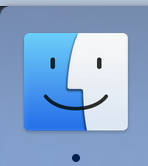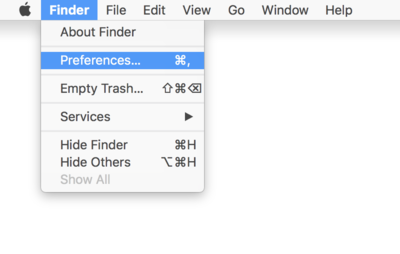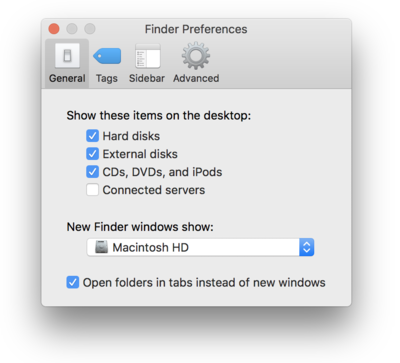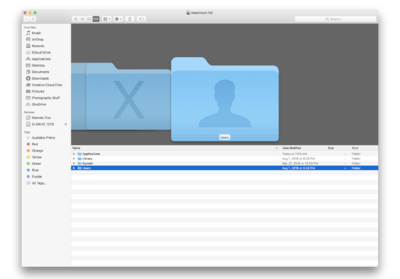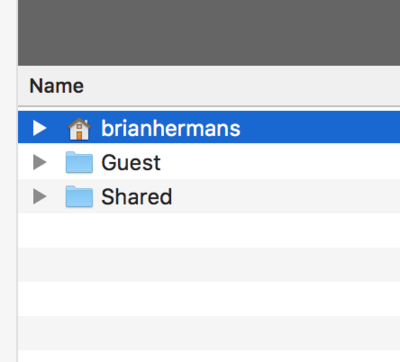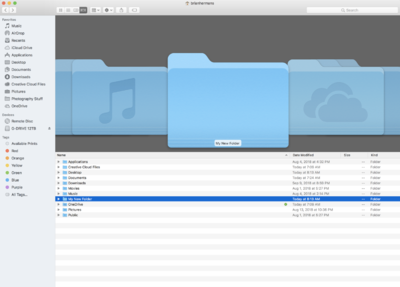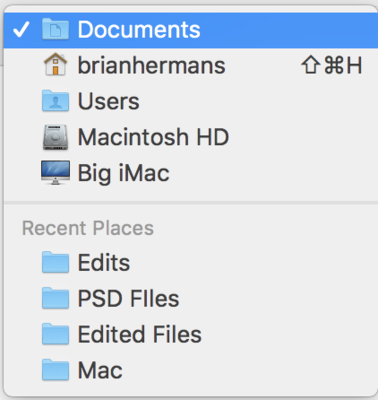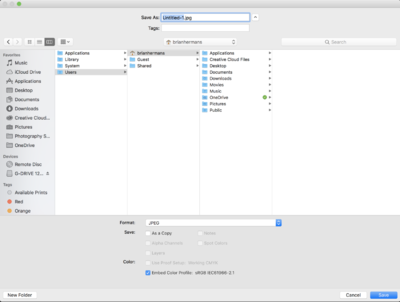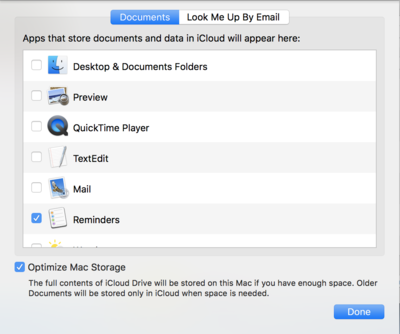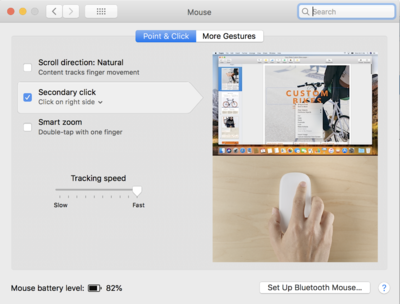-
Posts
4,097 -
Joined
-
Last visited
-
Days Won
51
Everything posted by Brian
-

Backup!! Best software to do it? Win 10 Pro
Brian replied to Shawn Taylor's topic in The Windows & PC Hardware Forum
Yeah, Windows 10 uses the Windows Backup from Win 7. I personally have only used it a handful of times, but you can configure it to overwrite each backup, so it won’t balloon in file size. Typically, when it comes to my customers, the most common backup software is Veritas Backup Exec. I think the latest is version 20. That said, backup exec is a professional backup software package and might be overkill for what you want. I think it would be best to use Windows Backup and do a weekly full backup (or monthly) and do an incremental daily backup. I’m going to have to think about this one. Personally, I just worry about data files being stored on an external drive and if my main drive craps out, oh well. I just do a re-install. Speaking of which, restoring can be a real pain with backup software. Have you thought about using a HD cloning program like Acronis True Image Backup? -
First, what video cable are you using? The traditional 15-pin / Blue VGA cable or something better, like DVI, HDMI or DisplayPort?
-
@Damien Symonds, could you answer this? This isn't a hardware question.
-
There lies the dilemma. If making the icons bigger doesn’t work, then all you have left to do is decrease the resolution.
-
The only way I can think of to do what you want to do, is choose a lower screen resolution that has the same aspect ratio of your monitor. So instead of 1920 x 1080, go for a size or two smaller. You can always put it back.
-
Do yourself a favor, hit the start button type "This PC" and it will appear at the top of the search Window. Right-Click on it and choose "Pin to Start" You will now have your "Computer" / "My Computer" back. You will need to delete the existing partition, create a new one, and reformat the G-Drive. It should take about 5 minutes. The process is the same as it was with Windows 7 and Windows XP. Microsoft keeps changing where things are located with each new version of Windows 10. You used to be able to right click on the start button and choose "Disk Management" but I'm not sure if they have taken it away. Anyway, that's where you need to be. You could try clicking the start button and type "Disk Management" or even "Format" and it should take you to the Disk Management program. Then you right click on the G-Drive and select "Delete Volume" and then then the whole drive will have a black stripe across it. Right Click again (on the black stripe / G-Drive Area) and select "New Simple Volume" and follow the prompts with the wizard. Give it a name like G-Drive 2TB and do a quick format. If prompted, since it's a 2TB drive, choose MBR for the partition type. GPT Partitions are for 3TB and larger Drives. Windows 10 is nothing like the nightmare of Vista or Windows 8. Trust Me. Have you tried right clicking on the taskbar, going into its settings and making sure that "Use Small Icons" isn't toggled on or checked? Oh, Windows 7 is going to be taken behind the barn and shot dead on January 7, 2020. So yes, we will all be forced to Windows 10 on that date if you want updates/security fixes.
-
Yeah, I can see the noise, though it's not THAT BAD. I agree with Damien, these photos are not Tack-Sharp. The Bass player photo is slightly salvageable, but with A LOT of help from PS and only to be viewed small on social media. It's not going to end up in your portfolio and I'd personally keep is small if posting on Social Media. Let's start with the Bass Player photo. From what I can tell, the camera locked focus on the word "Ride," since it seems to be a tad sharper than the rest of the photo. Or your lens is back-focusing slightly. There isn't enough of contrast swing on the eye and the light on his face is making the camera struggle. I would check your settings and make sure your camera is set to "Focus Priority" (or equivalent) instead of "Release." (or equivalent) Meaning, you will only be able to take the photo when the camera thinks things are in focus. Of course, you will end up on fighting your camera when it doesn't want to engage the shutter because it thinks things aren't in focus and that will result in missed shots. Which then folks will want it set to the other way, but that results in blurry, unusable photos. I'd rather have a noisy tack-sharp photo than a blurry one. The noise is typical for ISO 6400, and no matter what forum or review site or DxO score talks about your camera ISO 6400 is still 6400 and you aren't going to get the same results as if you shot at ISO 200 or whatever. Of course, sensors who capture at ISO 6400 are getting better, these photos remind me of shots taken with my D300s at around ISO 1600-2000. Now let's talk about f/2.8. The f/2.8 aperture will bite you, resulting in a DoF problem rather than a focus problem. f/3.2 is a lot more forgiving, so is f/4, and I know you didn't want to go above ISO 6400, but dropping your Shutter Speed isn't practical either. Especially if you are getting bumped while shooting in the Pit. Which takes us to the group photo... From what I can tell, your lens is back-focusing again. The only thing I can see that's sharp are the edges of the lights above the drummer; specifically, the gold/yellow light above the woman's head. That's in focus. Even the Microphone Stand over the drummer is more in focus than the people out front. At this point, I'd review your camera's settings, make sure that it doesn't try to use another auto-focus point if it can't lock focus. YOU want 100% control in situations like this. The camera will always take the easy way out. I'm wondering if there is some setting that needs to be changed. The other thing is to try using a different lens and see if you get better results. Especially in low-light situations like this. Your lens might need to be tweaked and hopefully your camera has a Auto Focus Fine-Tune. Anyway before we get ahead of ourselves, read your camera's manual and go over your autofocus settings. Try a different lens. Use f/2.8, f/3.2, f/5.6, etc. Learn your gear. You might find out that your lens is crap at 1.8, 2.8 and works best at f/4 or f/5.6. Or it's crap when people are more than 15 feet away and works perfectly if they are 5-10 feet away. I've had lenses like this. When I shot with a Crop Body and used my 17-55 f/2.8, photos were Tack-Sharp when the subject was 5-12 feet away and was "Ok" at 13-15 feet. As soon as they were 16-20 feet away, focus was soft and then I was reaching for my 70-200. I know you are going to be wanting to shoot at f/2.8 due to the light during musical performances. Which at that point you have two options: Send it in for repair and have it adjusted or buy a new (and better) lens.
-
Candy Crush: I found this: https://www.thewindowsclub.com/remove-candy-crush-saga-windows-10 Now, it is very important to right click on the Powershell tile and choose RUN AS ADMINISTRATOR before doing any Powershell commands. Yes, even if you are logged in as a Administrator, you need to elevate your Admin profile privileges. Taskbar: Do you want the Taskbar bigger or the Icons on the Taskbar to be larger? That's two different things. Screen Resolution also plays a role in how things, including the Taskbar, appear. That's why on Surface Tablets with 4K screens that things look so tiny. So it might be a resolution issue, or you have to adjust your icon size and not try to tweak the Taskbar Settings. Let's try changing the size of the icons, we can always set them back to where they were. Right Click on a empty space on the desktop Choose Display Settings at the bottom of the menu Move the slider below where it says "Change the size of text, apps, and other items..." to something larger, like 150% or 175%. Click Apply. You may have to log-out and back in for the changes to take affect, but probably not. If you problem still persists, you might have to physically make the Taskbar bigger. I found a decent instructions here.
-
Can I see the original photos before noise reduction? Because there seems to be multiple things going on. Same photos are fine, I want to see no noise reduction and no sharpening.
-
Yep, need examples, gear/lens info and what shutter speed / aperture / ISO used on the example photos Also, were you in the pit or further back?
-
Try it. You can always undo things. Let us know how it works.
-
Alright, before I start linking stuff, how much are you looking to spend? Because configuring / building a NAS is usually not cheap, especially if you want storage and redundancy. The hard drives that go into NAS units need to be of a higher caliber, meaning they run a LOOOONG time before failing, and you'll need to configure the best RAID option for your needs, which is usually RAID 1 (Drive Mirroring) and RAID 5 (Distributed Parity). There are others, like RAID 10 (or RAID 1+0) which your more technical people will usually recommend over 1 & 5. What does RAID stand for? Redundant Array of Independent Disks. "Huh?" Basically, it's two or more hard drives working in unison for a single purpose, usually data redundancy; meaning if one hard drive fails, the others pick up the slack and you still have access to your data. The only exception is RAID Level 0 or RAID0. Still with me? I know this is geeky stuff, but you need to understand this before you go buying things, because the NAS unit and special hard drives could set you back $1500 or so total, depending on how things are configured and what RAID level you choose. Speaking of the levels, here is a basic run-down: RAID 0 - Typically Two Hard Drives that work in Unison and appear as one big drive. So if you have two 4TB hard drives configured in a RAID 0, you will have 8TB Hard drive, well a little less after formatting...at your disposal. The benefit to RAID0 is SPEED. RAID0 is FAST. It's the perfect drive setup for those who edit video, as the read / write performance on traditional hard drives configured in a RAID0 is much faster than if they were used in a traditional fashion. The downside to RAID0, if one hard drive fails, the other goes with it. You lose all the data on that drive. This is similar to a External Hard Drive that only has one disk in the external case. People that store important data, like your client's photos and current projects, do NOT store them on a RAID 0 Drive. Like I said, RAID0 is great for cache files / scratch disks, etc. Files that are temporary and are created and deleted frequently. RAID 1 - Typically Two Hard Drives that are mirrored of each other. So a 12TB RAID 1 will have two 6TB drives that are mirrored. So if one hard drive fails, you have another HD that has a duplicate of the files on the failed drive. This is a form of redundancy. The downside to RAID 1, is if you delete a file, it's deleted from both hard drives instantaneously. If a file gets corrupted on one of the hard drives, the mirrored file on the other hard drive is also corrupted. That said, corruption is rare these days, so it's not that big of a deal. Just keep in mind, that a External Hard Drive that is advertised as a 12TB or 16TB drive, that storage capacity is cut in half if you choose to set it up as a RAID1. RAID 5 - This requires 3 or more hard drives to work, and using the same make/model/size seems to work the best. Of course you could use different brands, just as long as the capacities are exactly the same on all three drives. Well, I could go over the exceptions and geek-out, but I'm keeping things simple. You want three or more hard drives, with the same capacities and speed. The benefit to RAID 5, is it's like RAID 0 and RAID 1 combined, conversationally speaking. Like RAID 0, the three hard drives act as one bigger drive, plus has the added redundancy that RAID 1 provides. If one hard drive dies out of the three, the other two pick up the slack and keep going. This allows you to access all of your data. Downside, with a failed drive, things are a bit slower until you replace the drive and it's added back into the RAID. If two hard drives fail out of the three, you lose all your data. (The RAID setup crashes.) Hard Drives are pretty reliable these days and it's rare for two hard drives to die at the same time in a RAID 5. The trick is with RAID 5, if you have a hard drive fail, replace it immediately. This way if another hard drive were to fail, you are still only dealing with one hard drive that has failed. Make sense? In addition, since you need a minimum of three hard drives to build a RAID 5, that's three (or more) hard drives that you have to buy, and that costs extra. RAID 10 or RAID 1+0 - This configuration seems to be the one that people like the best these days. You get redundancy and speed, though I still find RAID 5 being used a lot. In a nutshell, take four hard drives and then combine both in a RAID 0 setup. THEN two pairs of hard drives are set as RAID1. So, you'll have HD A&B configured as a RAID 1 (Mirrored) and HD C&D configured as a RAID 1 (Mirrored.) Then all four hard drives appear as one big drive. This method works best if you are using SSD hard drives instead of traditional spinning disk hard drives. I could go on and on with this one, but like I said before, I'm trying to keep things simple. OK, I know that is a lot to take in, but you need to know this stuff for when you purchase and configure your NAS. There will be different setup options that you will need to pick, and these choices will depend on how many drives you purchase. If you purchase a two-bay NAS, you will only be able to purchase two hard drives, which limits you to RAID 0 or RAID 1. If you buy a larger NAS that supports more hard drives at the same time, there are more options for you. Of course, you could purchase a NAS that has 4-5 bays in it and only purchase two hard drives. (Take a four bay unit and configure two hard drives as RAID 1.) The downside is if you want to add a hard drive, with a two bay unit, you are buying another NAS so you can install more hard drives to get more options available to you. Plus, if you want to add a hard drive to an existing RAID, and want to change that RAID level, e.g. go from Level 1 to say, a Level 5, it's better to delete the whole RAID setup and start all over again. Which means backing up your data on the old RAID setup and restoring said data on the new RAID. Make sense? Yes, I know some technical folks in this forum will say there are options out there that allow you to upgrade/change level with out nuking the RAID, but those type of setups are usually done on fancy RAID controllers in expensive servers and the RAID is typically hardware based, not software. So again, I'm keeping this advice for the average computer user with no experience in setting these things up. Phew! I'm glad I got that out of the way. Hopefully I didn't scare you too much. Here is a typical Hard Drive meant for a NAS. I usually buy Western Digital HDs and these days would not buy anything smaller than 4TB. In order to get a RAID 1 setup (Drive Mirroring) and have 4TB at your disposal, you would need two of those hard drives, plus the NAS Unit. The NAS units that I recommend are the Synology 4 bay NAS DiskStation DS918+ (Diskless) and the QNAP TS-451+. Between the two, and for what you are looking for, I'd recommend the Synology NAS. The interface is simple and there are plenty of YouTube videos out there to help you configure things. I would personally recommend at least getting two WD 4TB drives and setting them up as a RAID 1, or purchase more and configure things as a RAID 5 (Minimum 3 drives) or a RAID 10 (Minimum four drives.) Of course the larger the capacity, the better. Now if this is something that sounds over your head, and you want simple, then you are doing SneakerNet with a drive like this.
-
I have no idea on this one, as I do not own a tablet. Hitting the x key will swap your colors and ctrl / cmd + I will invert your masks. Paging @Damien Symonds...Damien to the Front Desk.
-
QNAP and Synology are the two name brands that I would buy myself. I will give you a few links in a bit.
-
Start a new topic.
-
Ha! I was going to recommend a Cloud Service like Dropbox! How is your internet upload speed at both places? I do have an idea, and that's using something called a NAS, which stands for Network Attached Storage. Basically, it's your own private cloud / EHD that is attached to your network and not your computer. Some of the better NAS systems allow you to access your files from an external location, via a IP address & port number or even URL, so you will be able to upload / download stuff between home / office. By doing it this way, your files are in a centralized private location, but again, this might be cumbersome for you, in which case you are bringing a external hard drive between places. Plus there is the whole setup of this device. QNAP makes good stuff, and so does Synology. Between the two, QNAP has more options and Synology is easier to setup for a beginner. The other option is to use a program called Jump, which is a Terminal Program. This will allow you to remote control your computer at home from your laptop at work, but I don't think you want to do this either. You won't be able to be effective when it comes to color management, as with a Terminal Program, it downloads screenshots of your desktop at home. This method is great to control your computer remotely but not for actual editing. Honestly, and Damien might have a better opinion on this, showing the final JPEGs to your clients might be better instead of dorking around with the master .psd files. They are the files that will be uploaded to your printer / given to the customer, right? Unless you are tweaking things between your iMac and MacBook? If so, that's going to be a royal PITA as screens are different between the two computers. A Calibration Device is a must and depending on the ambient light between the to areas, your colors could be off.
-
Seriously, invest in a 70-200 lens. Even though you might be a "Prime Person," both the 70-200 f/4 and 70-200 f/2.8 versions are totally worth it.
-
Now for the easy part.... I find it is MUCH easier to setup my folder structure first, OUTSIDE OF PHOTOSHOP before doing anything via the finder! First, open the Finder Then choose "Finder" next to the Apple Menu and select "Preferences." Click the General Tab and and make sure these things are checked. You could also choose what happens when you open a new finder session. Do you want your Macintosh HD folder to appear (Root) or do you want your Profile Folder to appear first? I set mine to Macintosh HD, the internal drive: After you make your choices, click the Red Circle at the top left to save things. Now your finder should be at the "Macintosh HD" directory double-click on users: Select your profile name via a double-click: From there you can right click and choose New Folder, give it a name, etc: If you notice, by default the "Carousel View" is selected. I find it easier to select the column view: Then you can click-and-drag the folder to where you want, or create new folders, etc. Fiddle with things and you should figure it out in no time. Now when you save out of Photoshop, you'll be able to navigate your way down to where you want to save things.
-
The second part of this problem is how Photoshop, or any other program for that matter, works within the Mac OS file-structure. Even though it has a pretty interface, there is still a Unix (Pronounced You-Nicks) Operating System to control things. It's very similar on how you need to choose what hard drive your folder is stored on a Windows before it will save things. When you go to do your first save out of Photoshop, click on the File Menu and choose Save As. From there you'll have a couple of choices. If you want to save your file to a folder on your internal hard drive, click the arrows next to "Documents" and select your username OR Macintosh HD if you want the main file structure. I'd typically pick my username, since I want my stuff being stored under the profile that I'm logged in as. It keeps things simple. From there your screen should look like this: You might have to fiddle with these buttons at the upper left corner to get the "View" that you prefer: Find the folder that you want to save in and click Save at the bottom:
-
Yep that is exactly what is happening, iCloud is getting in the way. Your files are being stored there. You'll need to turn things off. Let's take a look at your settings in iCloud. Head to your System Preferences and then choose iCloud. Then click the Options Button and uncheck things. Command+Shift+4 will allow you do "Snip" a screen shot. This is what mine looks like: While you are in System Preferences, if you haven't already, turn on the right-click for the mouse:
-
The Nikon 58mm 1.4 is a great lens. It’s nice and sharp and the bokeh is also very nice. Not legendary nice like a 85 f/1.4, but very decent. I like the images that come out of that lens. The main downside to that lens is that it’s extremely slow when it comes to autofocusing. I mean like old-man-just-woke-up from a nap slow. I wouldn’t shoot wiggly kids with it. Awesome for video though The Sigma Art is well regarded, but as with 3rd party lenses, QC can be an issue, so be sure to test it thoroughly if you go that route. I’ve never personally shot with that lens so I can’t give you a 1st person review but people seem to like it it’s way better than Nikon’s 50mm lenses, especially the 50 1.4G lens, that lens just sucks. Whatever you do, skip the AF-S 50 1.4G I hate that stupid lens and I’m a Nikon OEM Snob In addition, and I don’t care what others might say, third party lenses do not hold their value, no matter what the DxO score is, no matter how sharp it is, or how much people in a FB group swoon over it, etc. it’s still a ____________ (insert brand name that’s not Nikon here) lens. “I’ll give you $________, since it’s a Sigma...” (or whatever) when you try to sell it. Alternatives: Nikon 70-200 f/4 or my beloved 70-200 f/2.8 lens? Even though it’s only f/2.8, you get the added benefit of compression at the longer focal lengths. It just sucks the background in.
-

Dell replacing system but need some help
Brian replied to Cindy's topic in The Windows & PC Hardware Forum
Yeah, that computer that they are trying to give you is really meant to be in a business office, like a computer used to check you in for your appointment. Oh well. -
Umm...yeah. Time for a new desktop. I can totally see where your are coming from. In reality, you need to replace both your desktop and laptop. One of the biggest things that I see, is that you do not have a central place for all your files. You are uploading and bouncing back-and-forth, and I'm wondering how you keep everything straight. LOL! Man, talk about WORK. I almost want to recommend using something called a NAS, which stands for Networked Attached Storage; meaning it's kinda like a External HD that resides on your network and not attached to your computer. You would attach it to your Router or Ethernet Switch and both computers would access it via a network shared folder. It sounds more complicated than it actually is. In a nutshell, it's like having your own "Private Cloud." Now comes the answer for the "What do I buy?!?!?? question. Since you are showing images to clients to your "Sales Session," (I know it's called In-Person Sales these days, but back in the day...it was just know as "Sales," but I'm digressing and showing my age. ?) I think you will be better off getting a better laptop at this point. Time is money, and if you can sell more product due to a better screen then you can re-coupe your losses with buying the laptop first, and then tackle the replacement of the main editing machine. Of course, you may not have a large budget, and in that case I still would purchase a laptop but also purchase a 24" - 27" screen that is calibrated and stays in one place for your clients to view their images. When it comes to a laptop, I prefer Intel Chips. I realize that AMD is usually cheaper, but when it comes to laptops, I prefer Intel. Second, you have integrated video on your desktop computer, the dead give-away is "7.19 usable." A part of the RAM is being reserved for the video card. You do not want that in either your future desktop or laptop computer. I'm also pretty sure that your laptop screen is not IPS based, and that is making your photos that you show your clients NOT look their very best. Hopefully your prints match to one of your computers, but since your clients are looking at that laptop, that screen NEEDS to match your prints or is pretty damn close. Now for the dose of reality...your requirements are not of a $500 or less laptop. A budget of $1000 - $1500 is more likely. So before I start linking stuff, WHAT is your budget?
-
Copying and pasting the files and then uploading them to your printing company has no loss of quality. It’s when you open and re-edit and re-save the JPEG is where you can lose quality.



